Working as a professional photographer for about seven years now, I think it’s quite normal that there came a time when I got sick of taking photos. I felt like I am in autopilot mode, day after day for each of my shoots.
And then pandemic hit and I found a way to rekindle my love for photography. I bought my first ever film cameras, a Hasselblad 503cxi with Zeiss Planar 80mm f2.8 lens and a Rolleiflex MX EVS. I know, I dove straight to medium format cameras without trying first the 35mm. And on top of that, I wanted to develop my films by myself. I thought I might as well figure out the whole shebang.
One of the things I’ve learned is that choosing the right film reflects which developing chemicals to use. And also, what developing tools you’d need. As for me, I knew I wanted to shoot black and white. There is just a timeless look to it. Also, let’s face it, all those formulas and chemicals in developing colored films are way too intimidating for a newbie. So I rummaged a lot of forums and groups online for film enthusiasts and quickly found out about Ars Imago’s Lab Box. It’s a darkroom in itself; supposedly very easy to use anytime, anywhere. And since it also bypasses the need to load the film manually, I was immediately sold.
But then one comment mentioned something about the supposed inspiration behind the Lab Box– the Agfa Rondinax 60. Off I went to research about this daylight-loading developing tank. I found out that they were indeed very similar to Lab Box, except that the latter is modular; you can use it for 120 and 35mm via interchangeable reels and modules. In the end, I quickly decided to get the Rondinax 60 instead of the multi-format Lab Box since I have always valued time-tested devices. That, and I am also guilty of being in favor of vintage items.
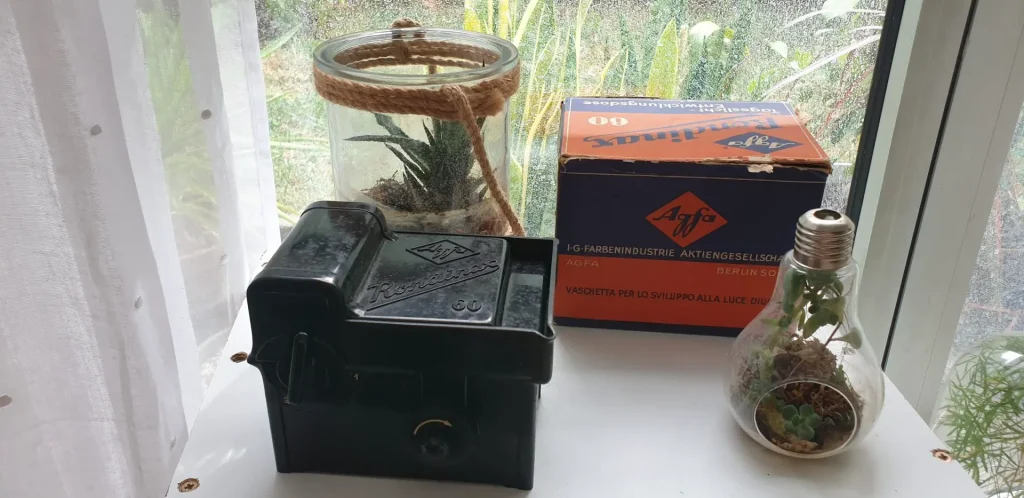
The Agfa Rodinax 60 is all that a newbie could ever dream of– relatively easy to load the film without needing to touch the negatives, and it needs lesser chemicals to use (150ml is enough). All this, I can do even in daytime without having to resort to making a DIY darkroom out of my kitchen sink! One just needs to open the top part, insert the film (of course the adhesive should already be removed before loading), and let out a few inches of the backing paper to draw it out in the rear. Then from there, you can close the lid and start gently pulling all the backing paper out.
Once you reach the end, open the lid and cut off the backing paper, and remove the empty spool. I usually just fold the sticky end of the tape and clip the leader strap on the small visible part of the film that is exposed; the rest of the film should be rolled up snug and tight in the “cassette”. Then close back the lid, lock it well and start pouring the chemicals slowly on the right side part that looks like drainage, while you turn the side handle continuously for a few minutes depending on your film and developing chemicals. For every chemical change, you just need to pour the liquid out from the spout and gently pour the next one in. Once all is done, you can now open the lid and slowly unroll the film to let it dry. Sounds simple, right? Here’s a manual I found online on how to use it.
There is also a 35mm version called Rondinax 135, which I also hunted down and bought, though haven’t tried to use it yet as I am still in my honeymoon stage with medium formats.
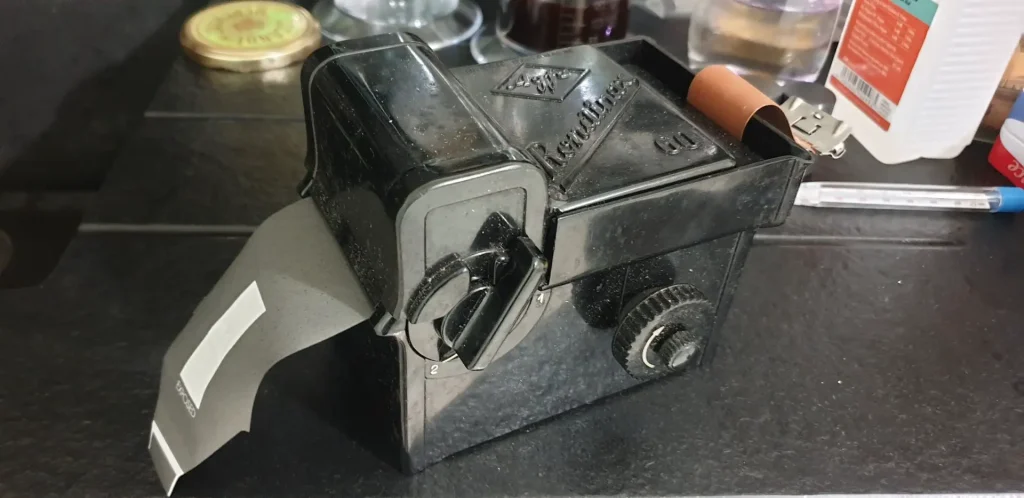
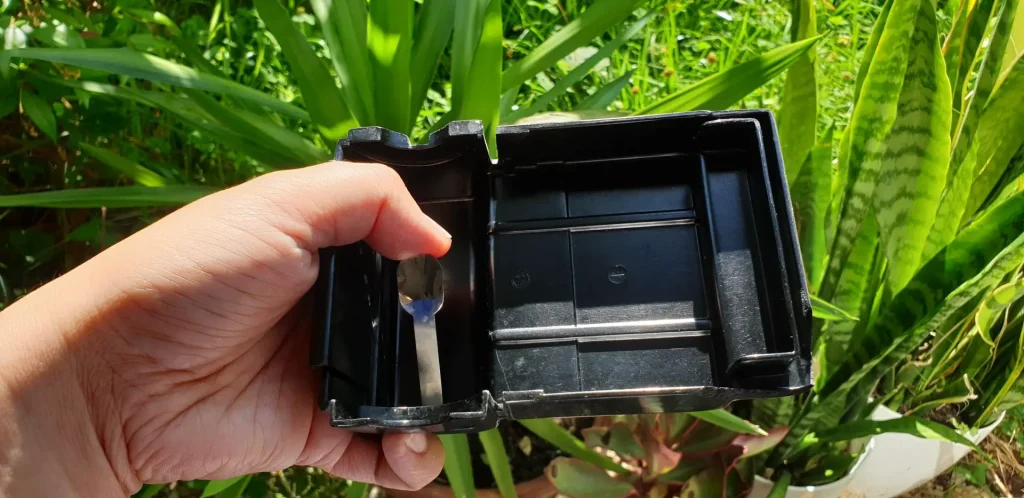
In truth, I am forever grateful for my Rondinax 60. It has helped me take a step forward and learn the basics of film photography, in a sense that it gave me completion in my work, as I am able to develop and see my photos, albeit digitally scanned. I am not ready to self-print my negatives just yet. The low learning curve also gave me some confidence, compared to those tanks with spiral loaders, which were notoriously difficult to manipulate in the dark. I then decided to keep a journal about my film photography journey on my Instagram account, and that comprises my digitally scanned photos including my first few rolls (badly measured settings and all). I know that one day I would want to look back and hopefully from where I would be standing in the future, I am way better than when I first held my film camera.
The first few rolls were perfect and made me look forward to shooting more. Then I started to have loading issues – and that’s where the honeymoon ended. Since the whole process happens inside the tank, I wasn’t able to know if my film actually loaded well. A lot of times I had one that was not even loaded at all. I did found a few band-aid solutions to those nuisances but ultimately, it killed the momentum as you watch a number of your negatives get destroyed. And film is not cheap for me.
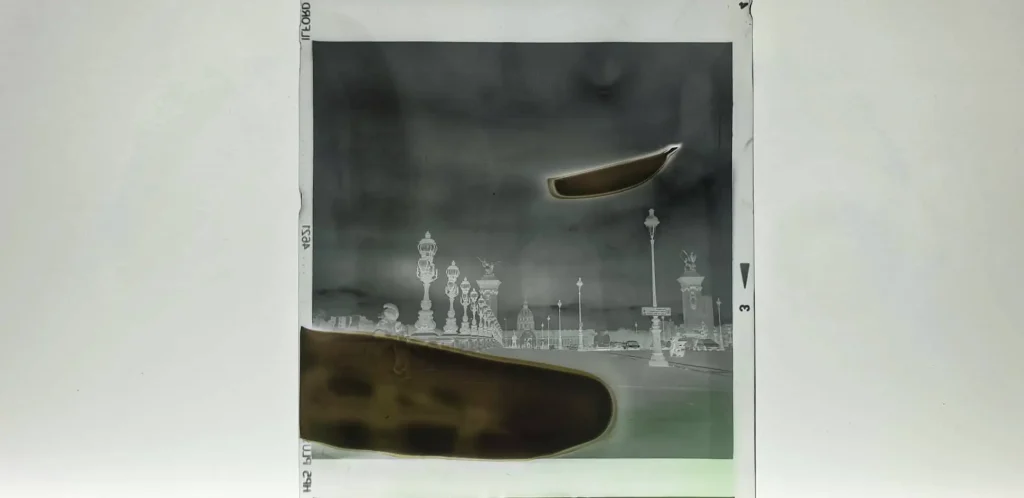
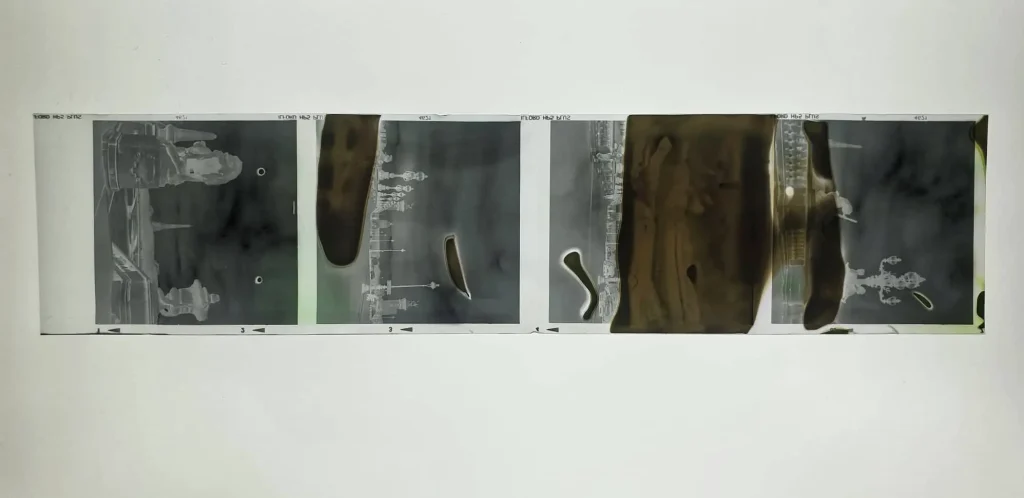
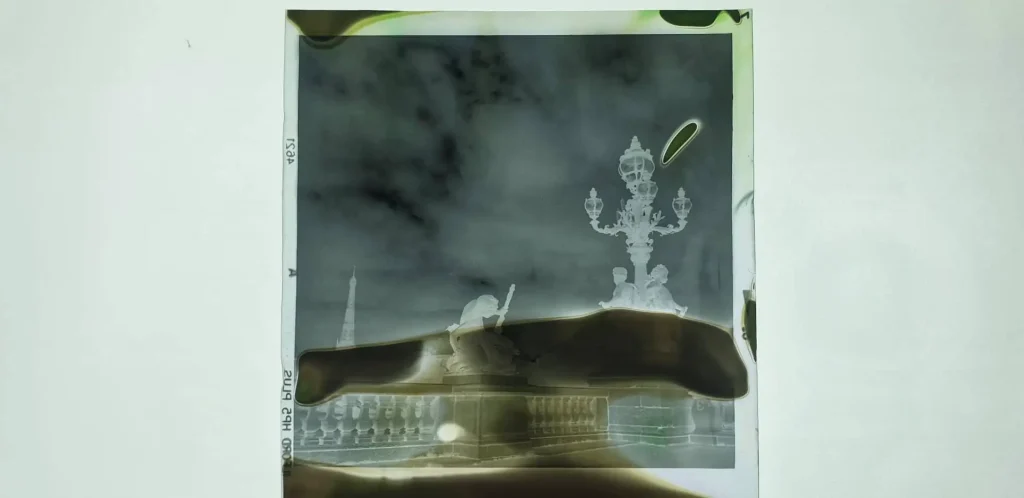
One day, I just totally gave up on it and I bought myself a Nikor stainless steel tank with a Hewes spiral reel. Why these brands? I just happen to read a LOT of forums on which tanks are foolproof and these names keep on coming up and so I gave in. Also, I opted for the stainless steel ones because I don’t like plastic and I think it’s easier to clean and dry.
And I have to say, the first time I developed with these tanks, I was extremely nervous. But turns out, I loaded the film perfectly on my first try! Life could have been easier earlier, who would have thought. I followed the instructions on the agitation and didn’t have any issues about air bubbles on my film or anything like that. My negatives came out clean and clear. I even tried to develop two films at the same time, since I also got a second bigger tank. Once, I had a bit of difficulty loading the film as it got really hot that day and I have very sweaty hands. Fumbling in the dark doesn’t help too. Other than that, I haven’t looked back.
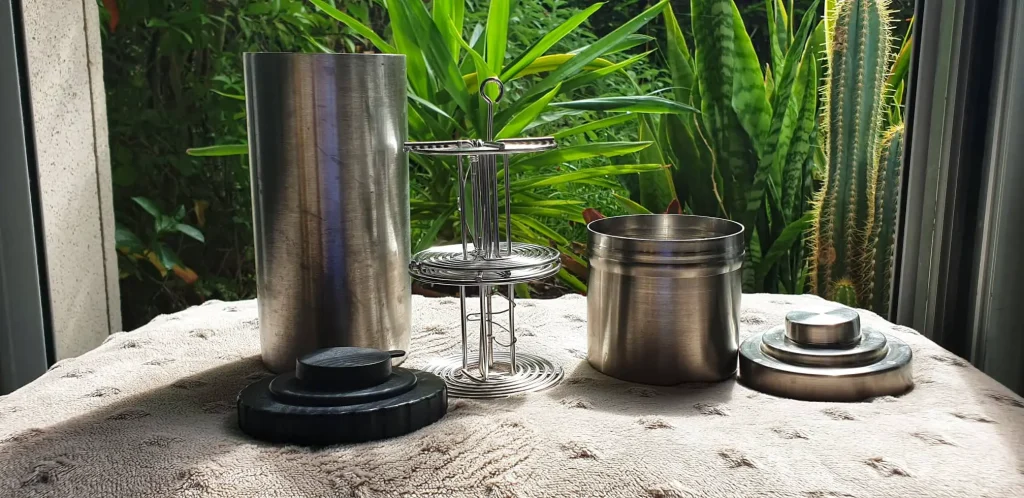
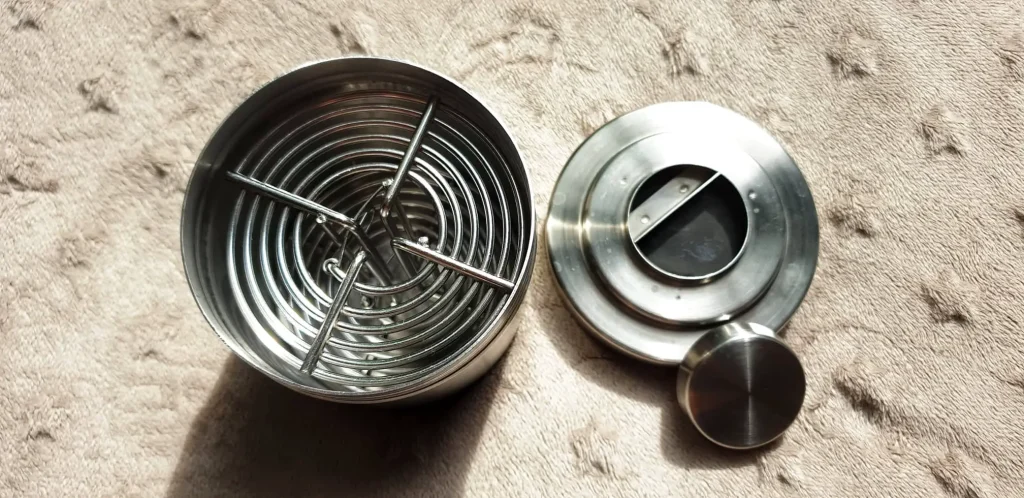
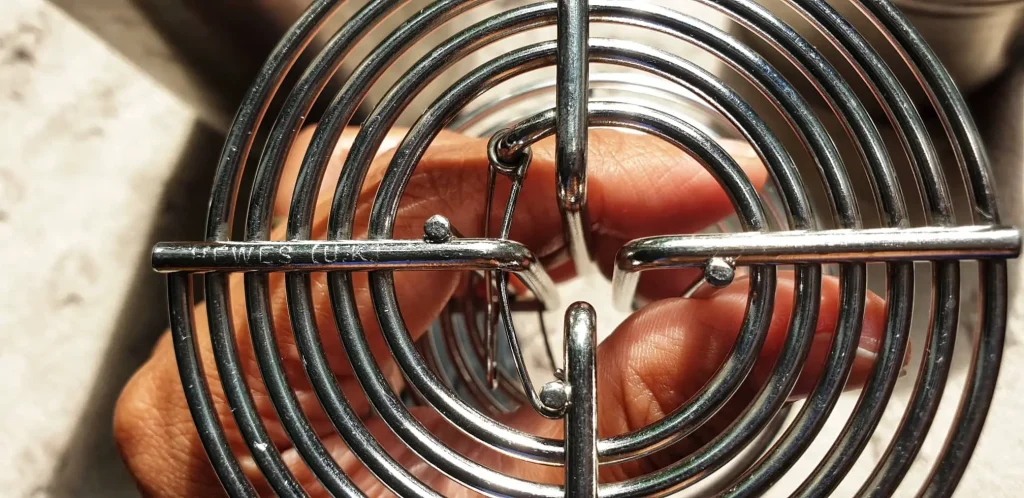
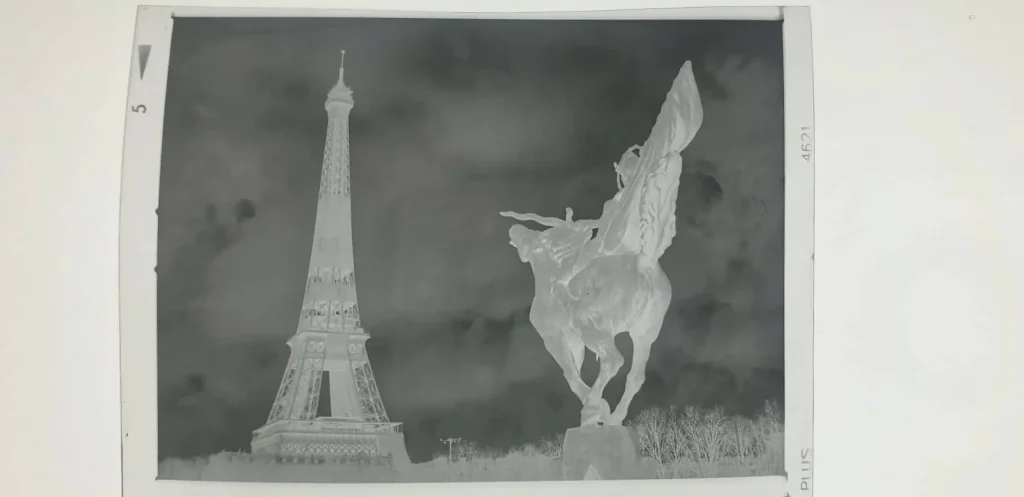
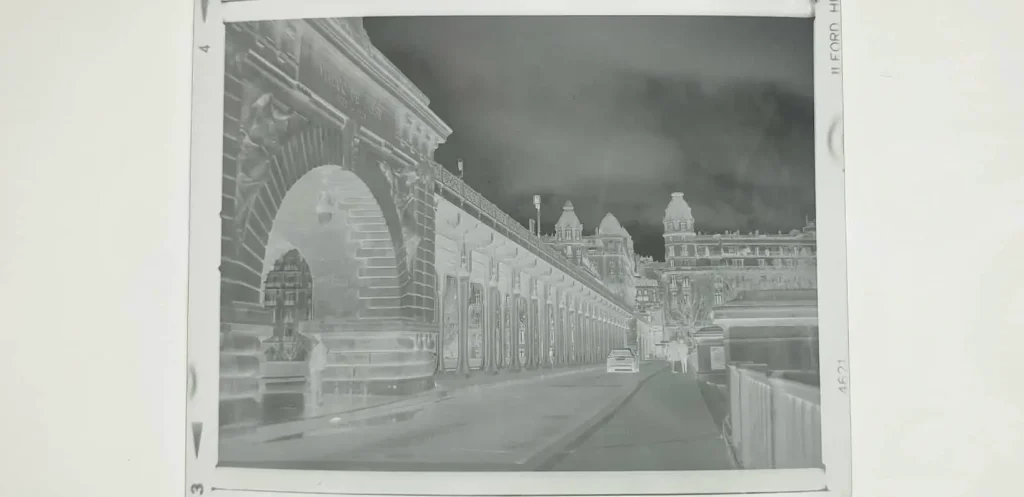
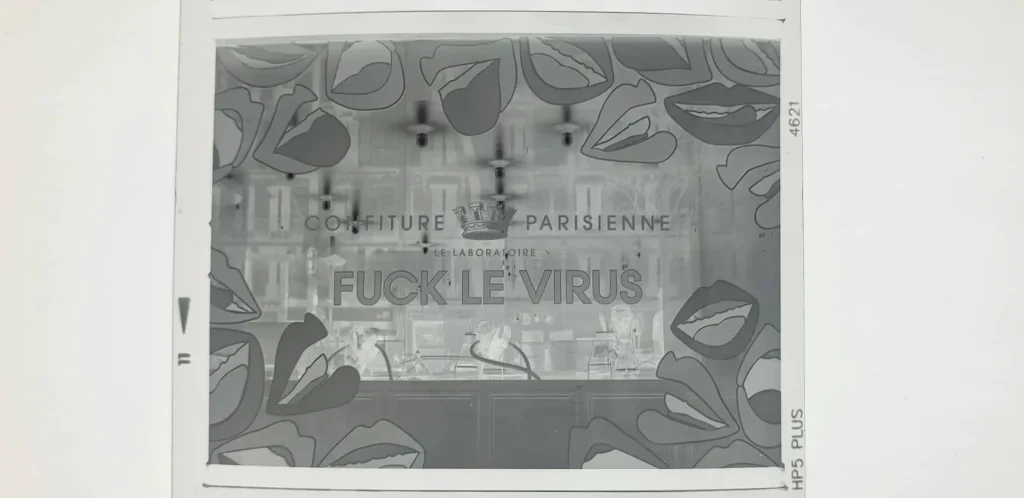
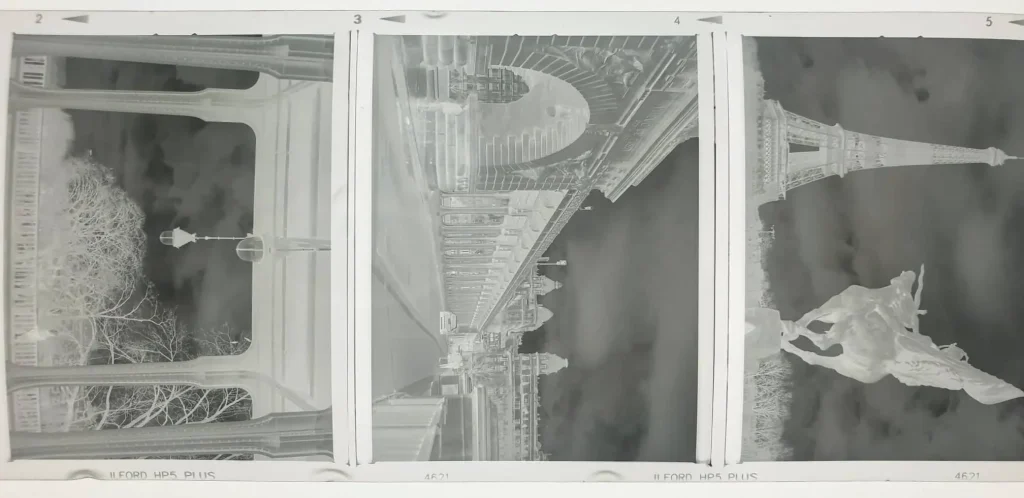
But, I don’t regret starting with the Rondinax 60. I think the (false) sense of ease of use helped me a lot in terms of confidence to keep shooting and developing. The thrill of what would it look like, once my photos get developed. Did I get a good combination of ISO and shutter speed? Did I get the framing right? I wonder if I executed well my ideas. These are the things that should matter most to you, as a film newbie, right? And not the “did-my-film-loaded-well-inside-my-tank?”
Your turn. Which tanks did you use during your first stages as a film newbie? Did you change it ever since?
Share this post:
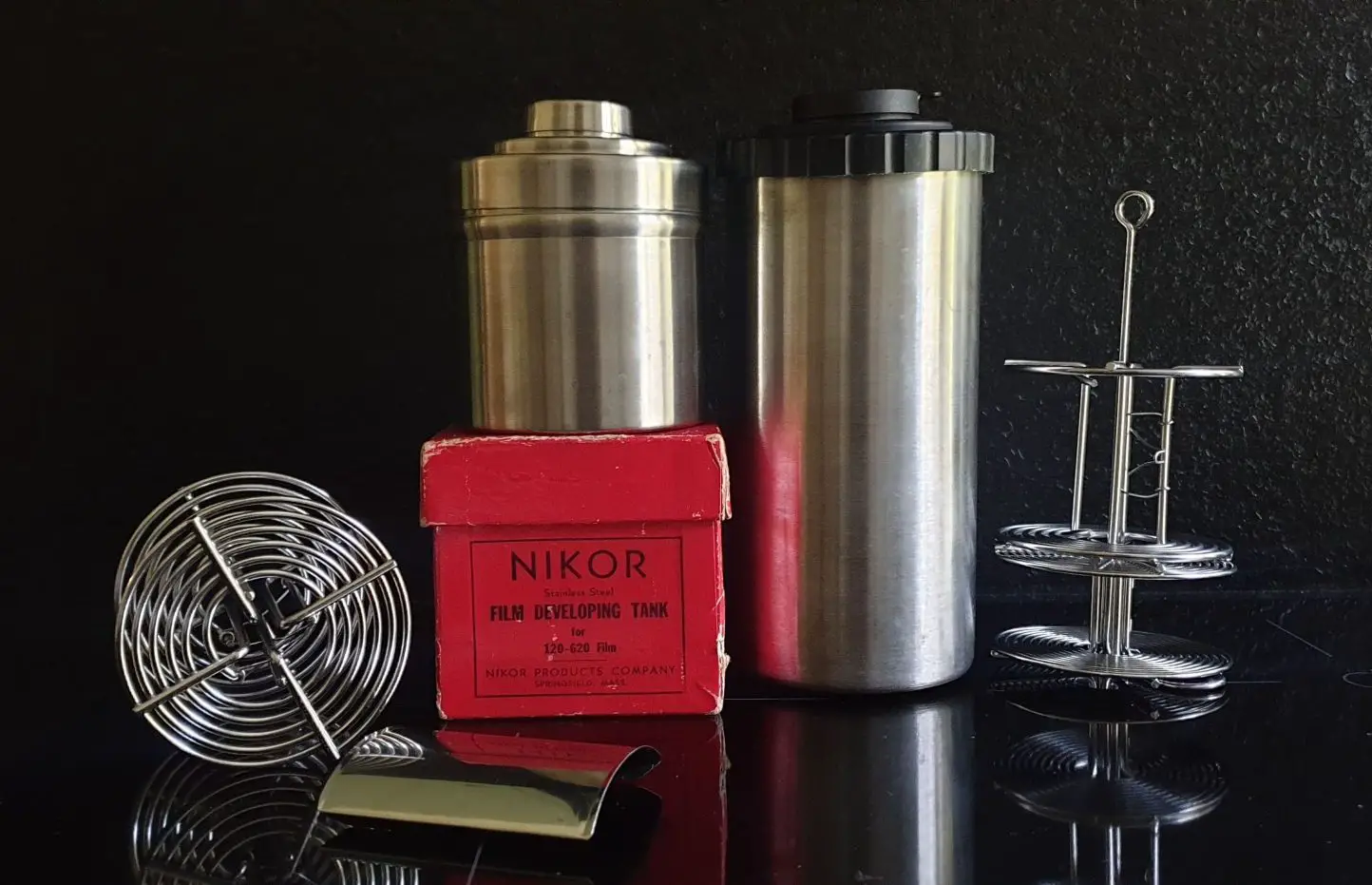
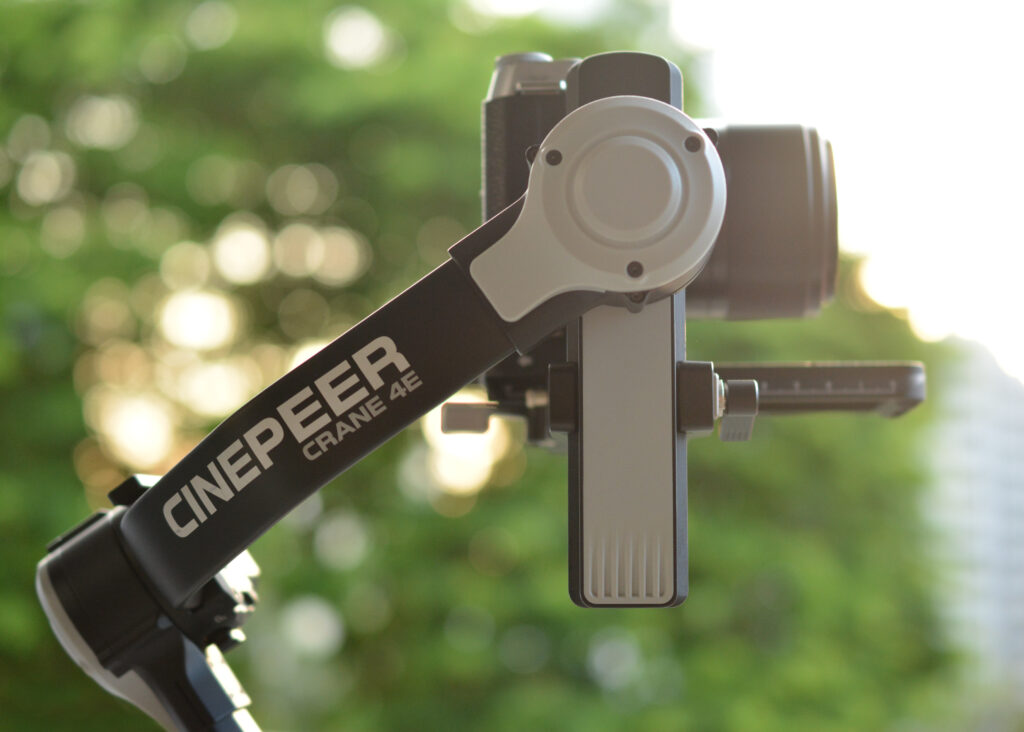
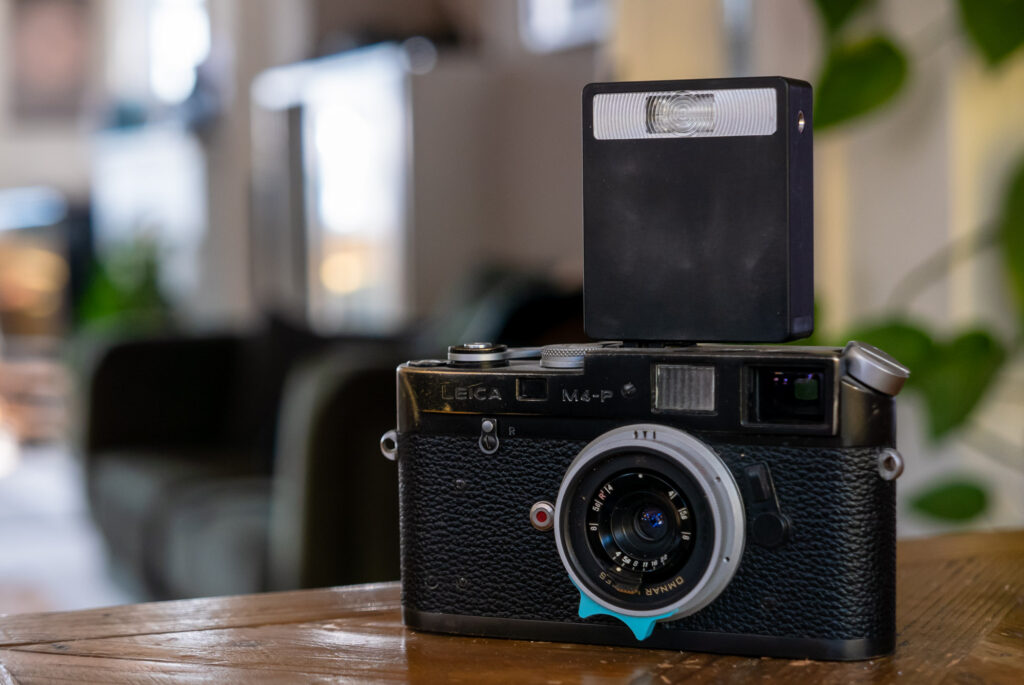
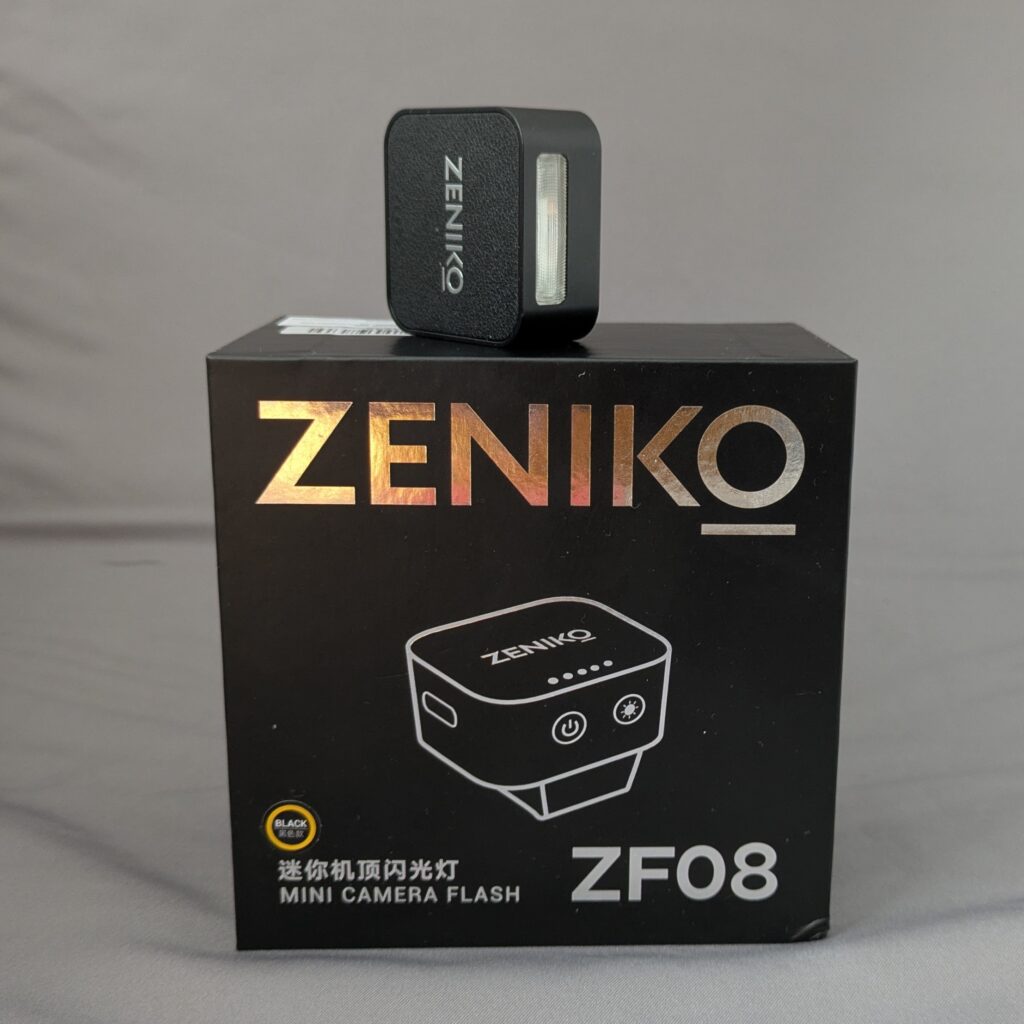




Comments
Bob Janes on My Search for the Right Developing Tank – By Ciela Guenne
Comment posted: 29/09/2021
When I got back into photography in a big way about 15 years ago, I got myself a dark-bag and a Kaiser knock-off of the Paterson tank, which works well enough, although the spirals were not as smooth loading as their Patterson equivalents - often requiring manual feed.
I now use the two spiral version of the Paterson Super system 4 developing tank, which I find to be a very good design - easy to fill, empty and open.
I'm a big fan of the Paterson automatic reels, but I wish they made a version that would cope with 16 mm film.
I note that there seems to be quite a difference between tanks that are available in North America and Europe.
Comment posted: 29/09/2021
Comment posted: 29/09/2021
Comment posted: 29/09/2021
Roger Carter on My Search for the Right Developing Tank – By Ciela Guenne
Comment posted: 29/09/2021
Comment posted: 29/09/2021
Ken Rowin on My Search for the Right Developing Tank – By Ciela Guenne
Comment posted: 29/09/2021
Comment posted: 29/09/2021
Phil Steelandt on My Search for the Right Developing Tank – By Ciela Guenne
Comment posted: 29/09/2021
I enjoyed your post.
I have always use the Patterson tanks.
They are very easy to use with 35mm film, but with 120 film it is sometimes tricky to load the film under the lips of the reel...I know the "sweaty fingertips in the changing bag" problem ;-)
I shoot medium format with a Fuji GW690 and have 8 photos on one roll.
2 weeks ago, I decided to give the Lab-Box a try for my 120 films.
It works fine and loading the film is very easy with it.
BUT...the Lab-Box is expensive, it takes more time to clean and to dry than a spiral tank and (due to the price) I have only one Lab-Box and usually has 2 or 3 films to process.
So I still have to use a mix of spiral tanks and Lab-Box when developing my films.
Your post triggerd my curiosity.
I looked on Ebay an saw a pristine Rondinax in Holland...but this is as expensive as the Lab-Box.
Bien à toi (kindest regards)
Phil
Comment posted: 29/09/2021
Howard S Shubs on My Search for the Right Developing Tank – By Ciela Guenne
Comment posted: 29/09/2021
Regarding the tanks you're using, if they work for you, let it be! Why spend more money if you don't need to?
Comment posted: 29/09/2021
Phil Steelandt on My Search for the Right Developing Tank – By Ciela Guenne
Comment posted: 29/09/2021
I don't think that the Lab-Box is worth the investment.
It is a good starter, like your Rodinax, but the workflow is very limited.
Every company stopped making them until Lab-Box re-invented them.
Once you will get used to feed the spirals, you'll see that it's easier to develop more films with different tanks (if needed)
The pastic Patterson:
I still use one of my tanks I had when I was in filmschool...it's now 46 years old.
As Ken Rowin says "the medium format reels can be a bit finicky to load, but the vast majority of the time they are a pleasure to work with"
I hope for you that the guys at Patterson read all this positive feedback on their tanks in the replies on your post...and send you one for free ;-)
Comment posted: 29/09/2021
Patrick Abe on My Search for the Right Developing Tank – By Ciela Guenne
Comment posted: 29/09/2021
(What is "walk-in" loading? The top of the reel was twisted as you fed the roll of film onto the absolutely-dry-or-the-film-will-stick reel.)
Paterson plastic reels weren't a thing yet, so the Agfa Rodinax or Nikor/Kindermann metal tanks and reels were the alternatives. As a poor college student, I opted for Nikor developing tanks and reels. These could be completely dried easily, and once film loading mastered. took out another variable in the photographic process.
Paterson developing tanks and reels did become available, but Kindermann made more interesting tanks and reels, so I never used that system. The metal reels and Plastic Kindermann tanks took me from black-and-white to color (C-22, E4, Unicolor) until I was forced to give up film photography just before the turn of the century.
The tanks and reels have been unused for decades, because digital electronic photography was faster and one didn't have expiration dates to bother with. Ye Olde darkroom has likewise been unused since I processed my last rolls of Tri-X and Plus-X Pan in D-76. Oh well, chemical-based photography had it's day, though nothing digital can beat watching a print appear in a Dektol 1:2 solution.
Comment posted: 29/09/2021
Dan on My Search for the Right Developing Tank – By Ciela Guenne
Comment posted: 29/09/2021
I will also add that Paterson do have some quality control issues, like plastic parts having rough edges from the molding still on them. Sometimes you have to file down here and there to make everything smooth. Also those lids - never store with the lids on tight, they'll lose their elasticity. And finally, when you pour in the developer and put the lid on, briefly lift one corner up to 'burp' the tank. I've never had a leak this way.
Comment posted: 29/09/2021
Doug Anderson on My Search for the Right Developing Tank – By Ciela Guenne
Comment posted: 29/09/2021
When I started developing film again in 2010 I got out the old tank and reel and found the Nikor reel hard to load and the Nikor tank hard to fill with my essential tremor much worse than 30 years ago. So I bought a Paterson tank and reel. I found the tank very easy to use and the reel easy to load - most of the time. But sometimes I just couldn't get it to load.
Then at a photo swap meet I saw a Kindermann funnel to use with their stainless tanks with plastic tops. I bought the funnel, a one-reel Kindermann tank and a Hewes 35mm reel and I haven't looked back. Easy to load the reel, easy to fill the tank, and none of the leaking I had with the old Nikor tank.
NB The Kindermann funnels are not easy to find.
Comment posted: 29/09/2021
Sroyon on My Search for the Right Developing Tank – By Ciela Guenne
Comment posted: 29/09/2021
Comment posted: 29/09/2021
Dan Castelli on My Search for the Right Developing Tank – By Ciela Guenne
Comment posted: 30/09/2021
I taught B&W photography for 35 years. We used s/steel reels & tanks. Try teaching a high school class of 15 students how to load those tanks. It took about a week of daily practice for the kids to get the hang of it.
We kept a couple of Paterson tanks on hand just in case. I still use s/steel tanks for my personal work now I’ve retired.
A couple of points:
1. Paterson reels must be totally dry to load.
2. Film damaged? In total darkness, fill a large pan with water. Submerge the Patterson reel & the film under water. The water will make the film pliable, it will load on the reel with little difficulty. This is sort of a doomsday exercise; you may save the film, but be prepared for some damage.
3. A s/steel reel can be loaded when wet.
4. Less chemistry for s/rainless steel vs. plastic.
5. Plastic breaks. Steel dents.
6. Temperature control is more precise w/steel than plastic.
7. Reels from Hewes are the best, but cost $$$. Checkout online auction sites.
8. Don’t drop s/steel reels. See #5.
9. All tanks leak.
I once had a student ‘develop’ the backing paper from her 120 roll. I once had a student load his film emulsion-side out. Almost impossible to do. He did it. Ruined his film.
Clean the s/steel tank really carefully: you can use it as an emergency mug for drinking a Moscow Mule. But only for an emergency! Copper mugs are preferred and have handles. (Joking about this…)
Comment posted: 30/09/2021
John Earnshaw on My Search for the Right Developing Tank – By Ciela Guenne
Comment posted: 30/09/2021
Comment posted: 30/09/2021
Comment posted: 30/09/2021
Comment posted: 30/09/2021
Bob Janes on My Search for the Right Developing Tank – By Ciela Guenne
Comment posted: 30/09/2021
It looks like fogging from not being properly fixed - it might not be too late to try bathing one of them in a small amount of fixer to see if that clears the spots (apologies if you have already tried this...)
Comment posted: 30/09/2021
Comment posted: 30/09/2021
Rico on My Search for the Right Developing Tank – By Ciela Guenne
Comment posted: 30/09/2021
Comment posted: 30/09/2021
William Watts on My Search for the Right Developing Tank – By Ciela Guenne
Comment posted: 30/09/2021
As I also shoot 16mm, 9.5mm and 110 film. I have Jobo reels and tanks for those and 35mm and 120 film sizes along with a CPE2 and a CPE2 processor for processing colour film. The water bath requirements for temperature control mean the Essex / Kent /Rondinax tanks cannot be used.
Comment posted: 30/09/2021
David Hill on My Search for the Right Developing Tank – By Ciela Guenne
Comment posted: 30/09/2021
Comment posted: 30/09/2021
James T on My Search for the Right Developing Tank – By Ciela Guenne
Comment posted: 30/09/2021
Comment posted: 30/09/2021
Terry B on My Search for the Right Developing Tank – By Ciela Guenne
Comment posted: 30/09/2021
The 20 exposure limit for 35mm film ultimately became an issue and as inversion agitation was becoming popular with acutance developers, I bought a Paterson 35mm Model II tank. Both co-existed for a while before getting the early version single film Paterson System 4 tank. (This has a much easier to screw-on lid.) My final tank, which I never got to use a lot as I'd transitioned to digital, was the Jobo Model 2400 daylight loading tank.
I've noticed many on-line comments commenting in a negative manner about loading a Paterson tank with 120 film. For film newbies, it isn't quite as easy as with the stiffer 35mm films, but shouldn't present any problem with just a little practise. It is necessary, as with any make plastic reel, to ensure the reel is completely dry and free from any emulsion that may have been rubbed off the wet film emulsion and stuck to the reel. I developed my own way of loading 120 film which alleviated, for me at least, the issue with the film's inherently less torsional strength compared to 35mm. I'd unwind the backing paper until the end of the film appeared and then I'd introduce this into the reel. As the reel was loaded the backing paper was left free to fall away of its own accord, loading proceeded until the adhesive tape was reached and then the paper was simply pulled away. This method, whilst it may at first seem odd, and requires a little practise, helped a lot in maintaining structural integrity of the film itself as it was being loaded.
la_photografille on My Search for the Right Developing Tank – By Ciela Guenne
Comment posted: 30/09/2021
Thanks for sharing. I do not know the Poly-Min plastic tank so I ran a quick look on the internet. Always happy to discover another type of developing tank :)
I am trying to imagine your loading method. If I got it right, you feed first on the reel the top of the roll and not the one with adhesive? And you just let the backing paper fall off once you reach the last end to load? It is very interesting, might try it next time and let you know :)
Best regards
Ciela
Terry B on My Search for the Right Developing Tank – By Ciela Guenne
Comment posted: 01/10/2021
There was also a Poly-Max that accommodated 36 exposure film.
As for my "technique" for loading 120 film, you've basically got it. As you probably know, 120 film is only attached to the backing paper shortly before the first exposure, but is not attached after the last exposure, so when it comes to unwinding the backing paper to get at the film you will naturally come to the unattached end of the film. At this pont, I suspect many will simply continue to unroll the film and detach it from the backing paper. The issue then is that the adhesive strip has to be removed before the film can be introduced to the reel for loading and there remains the faint possibility that there could be microscopic adhesive particles left on the film and which could, but will not necessarily, affect the loading onto the reel.
The other factor to consider if the film is removed entirely from the backing paper, is that what is effectively the beginning of the film will be subjected to a smaller radius and thus more tightly curled than the other end and could be dependent upon how long the film has been stored. So, taken all in, is why I adopted my method of loading 120. There was also the added advantage as there was less handling of the film, leading to possible scratching, as loading was direct to the reel. I'm not saying that this is a universal problem at all, but I set out to minimise handling risks as much as possible.
I see that you intend giving it a try. It's likely to feel strange at first, so do let me know what you think, especially if you did find that loading the film was any easier due to less curvature.
Comment posted: 01/10/2021
Michael McD on My Search for the Right Developing Tank – By Ciela Guenne
Comment posted: 02/10/2021
Comment posted: 02/10/2021
Karl W on My Search for the Right Developing Tank – By Ciela Guenne
Comment posted: 13/01/2022
I am a little late to the game here and would like to thank everyone for their very informative comments. I just purchased a Russian Sputnik medium format Agfa Rodinax 60 type loading tank. I have good luck with cameras from there so we will see if their loading tank is as good. I am planning on using Cinestill DF 96 to develop, we'll see how that goes
Comment posted: 13/01/2022
Peter Kay on My Search for the Right Developing Tank – By Ciela Guenne
Comment posted: 13/03/2023
What an interesting read. I just bought a steel tank and spools and intend to give it a go. I always struggle with loading 36exposure films on to plastic spools as they always seem to stick, no matter how dry they are. Hopefully stainless steel will be more conducive. Regarding plastic spools and 120 film, Paterson spools are a challenge, however, AP spools have a wide guide at the beginning of the spiral, making it really easy to line up and start your film. I also start loading 120 at the end of the film. As you peel off the backing paper you eventually feel the loose end of the film. I feed this into the spool first for several reasons. If there is a strong curl it will be inside the spool rather than at the end, touching your film. If you unroll your film and separate it from the paper prior to loading you are increasing the risk of finger marks, dust and damage from the inside of the dark bag, and, its just easier. Now, wish me luck with the stainless steel tank!
Pete Kay